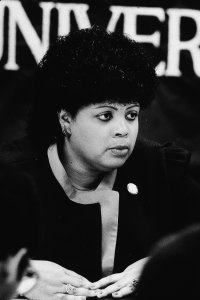
Source: New York Times Co. / Getty
Linda Brown, who as a little girl was central in the landmark Brown v. Topeka Board of Education case, has died. The matter made it all the way to the Supreme Court of the United States, effectively ending racial segregation in schools nationwide.
Brown was born February 20, 1942 in Topeka. She landed on the nation’s radar after having to travel a long distance to attend elementary school after an all-white school near her home would not admit her. Amazingly enough, the only schools in the Topeka system that were not integrated were elementary schools, prompting her father, a local welder and pastor, to join with the NAACP to challenge the rule.
NPR writes:
The school board prohibited the child from enrolling and Brown, an assistant pastor at St. John African Methodist Episcopal Church, was angry that his daughter had to be shuttled miles away to go to school. He partnered with the NAACP and a dozen other plaintiffs to file a lawsuit against the Topeka Board of Education.
By 1952 the U.S. Supreme Court had on its docket similar cases from Delaware, the District of Columbia, South Carolina, and Virginia. They all challenged the constitutionality of racial segregation in public schools.
Two years later the court unanimously ruled to strike down the doctrine of “separate but equal.” The justices agreed that it denied 14th Amendment guarantees of equal protection under the law.
“I just couldn’t understand,” Brown told NPR 19 years after the milestone decision.
“We lived in a mixed neighborhood but when school time came I would have to take the school bus and go clear across town and the white children I played with would go to this other school,” she said.
Brown remained in Topeka and worked as an activist and educator before retreating to public life. She used her platform and connection to the case by way of working with the ACLU in 1979 contending that schools were still segregated. In 1993, the courts agreed with that assessment and three new schools were built in the city to correct the disparity.
Brown was 75.
—
Photo: Getty















